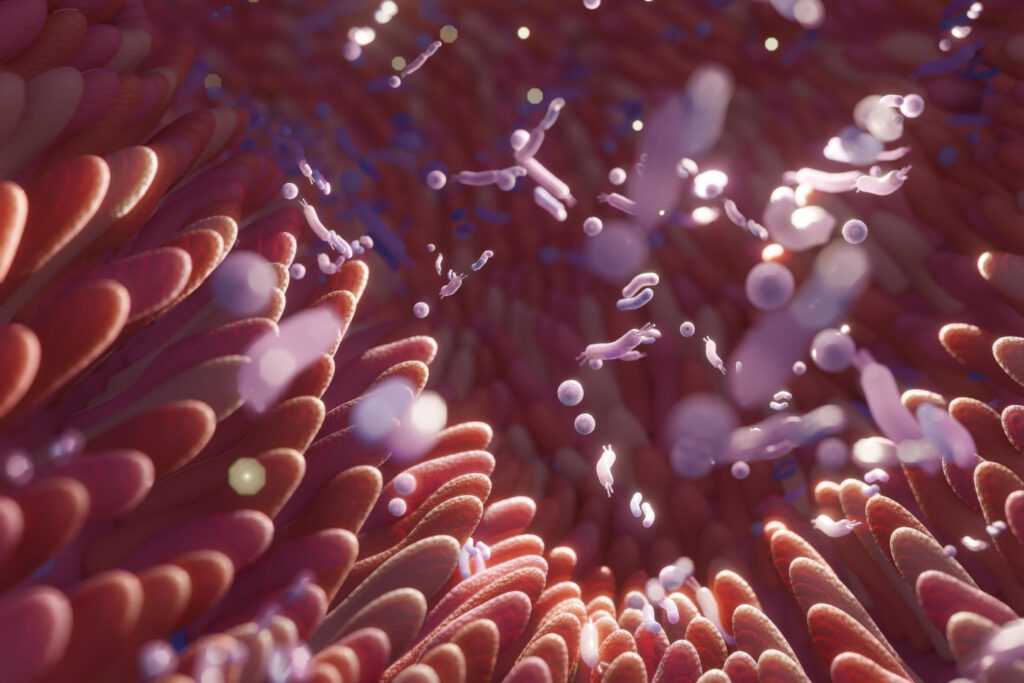The Gut-Brain Axis is an area of growing interest in equine medicine, with its foundations rooted in empirical research from human studies. This axis refers to the complex communication network between the brain and the gastrointestinal system, facilitated by the enteric nervous system (ENS). The ENS comprises a network of 100 million nerve cells lining the GI tract, which communicate directly with the brain via the vagus nerve. This bidirectional communication system is intrinsically involved in cognition, motivation, and temperament. Simply put, the health of the equine digestive tract can significantly influence how horses think, process information, and behave, with implications for their reactivity and performance.
The Role of Gut Microbiota in the Gut-Brain Axis
Gut microbiota play a critical role in the gut-brain axis by producing around 30 neurotransmitters that facilitate signalling between the gastrointestinal tract and the brain. Notable examples include:
- Serotonin: Approximately 95% of serotonin, the neurotransmitter associated with happiness and contentment, is produced by microbial byproducts in the gut.
- Gamma-Aminobutyric Acid (GABA): GABA plays a role in modulating fear and anxiety, promoting calmness and reducing reactivity.
Experimental evidence from germ-free models has demonstrated that microbiota composition significantly impacts stress reactivity and behaviors associated with anxiety and depression. Manipulating the gut microbiota has been shown to alter the expression of gut-derived neurotransmitters, with corresponding changes in brain activity and function.
Gut-Brain Axis and Gastrointestinal Pathologies
The gut-brain axis not only influences mood and behavior but is also implicated in functional gastrointestinal disorders. For instance, conditions such as irritable bowel syndrome (IBS) are strongly associated with mood disorders and disruptions in gut-brain communication. Dysbiosis can impact neurotransmitter production, alter stress and anxiety responses, and even affect the morphology of the vagus nerve and brain regions involved in pain processing, as seen in diseases like Crohn’s.
The Expanding Role of Equine Microbiota
The role of microbiota extends far beyond the fermentation of fiber and production of energy. Equine microbiota play a pivotal role in gastrointestinal health, immunity, cognitive function, and overall well-being. This highlights the importance of prioritizing hindgut microbiota health as a fundamental component of equine management.
SUCCEED® Digestive Conditioning Program®: Elevating Gut Health
Supporting hindgut microbiota health is key to optimizing equine well-being. Incorporating SUCCEED® Digestive Conditioning Program® into daily management offers targeted support through:
- Promoting Cell Renewal and Repair: Enhances blood flow to tissues, strengthens intestinal tight junctions, supports villi growth, and improves nutrient absorption.
- Boosting Natural Defences: Strengthens intestinal mucosal membranes, reduces the risk of infiltration and inflammation, and inhibits harmful bacteria such as Salmonella and Clostridia from adhering to enterocytes.
- Supporting Microbiota Activity: Supplies essential nutrients for microbial health, optimizes fiber fermentation, improves concentrate digestibility, and reduces the risks associated with the rapid fermentation of non-structural carbohydrates.
- Enhancing Immunity: Encourages macrophage activity, immunoglobulin production, and T-cell function to combat pathogens and support tissue healing.
- Binding Harmful Mycotoxins: Adsorbs and removes mycotoxins from contaminated feed and forage.
Advances in understanding the gut-brain axis and gastrointestinal function in other species have provided valuable insights into equine health and disease. Although there is much still to learn, it is evident that the microbiota play a fundamental role in numerous physiological processes and pathways. Prioritizing equine digestive health through programs like SUCCEED can help elevate equine welfare, optimize performance, and improve behavioral outcomes. For veterinary professionals, this offers a practical and effective approach to supporting both the physical and mental well-being of horses.





